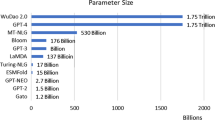Abstract
At present, human translation is characterized by low efficiency, high cost, high consumption of resources and time, so it is urgent to study automatic translation technology to meet the needs of information interaction and language communication in various countries under the background of economic globalization. In order to improve the performance of Chinese-English translation system, this study aims to use optical network transmission technology to optimize the translation process. This research is based on deep learning model and uses optical network transmission technology to implement Chinese-English translation system. The neural network model is used to train the Chinese-English translation, and then the data is transmitted to the cloud for translation using optical network transmission technology. Finally, the translation result is returned to the user. The system can learn by itself on the basis of analyzing source documents, and predict target translation output by extracting features. The system is equipped with a translation engine based on the data source, which can realize interactive translation, and the final output can be achieved by processing the predicted translation output and based on the translator’s understanding. Through the design of simulation experiments for system detection, the results show that the Chinese English translation model system has a high translation quality. By comparing it with the baseline system, it can be seen that both of them can translate sentences normally in 8 PR cycles (PR * 8, about 18% KSMR), and the data set improvement rate is about + 35 BLEU, that is, 76 BLEU is finally achieved. This proves that users can maintain the translation accuracy while reducing the number of effective interactions by using the optimized translation model to translate the target text, showing the effectiveness. In this paper, an interactive Chinese English translation system is designed by combining deep learning with cloud computing.






Similar content being viewed by others
Data Availability
The data will be available upon request.
References
Bruno, C.: The public life of contemporary Chinese poetry in English translation “The public life of contemporary Chinese poetry in English translation,” Target. Int. J. Transl. Stud. 24(2), 253–285 (2012)
González-Rubio, J., Ortiz-Martínez, D., Casacuberta, F.: Active learning for interactive machine translation. In: Proceedings of the 13th Conference of the European Chapter of the Association for Computational Linguistics, pp. 245–254 (2012)
Hearne, M., Way, A.: Statistical machine translation: a guide for linguists and translators. Language and Linguistics Compass 5(5), 205–226 (2011)
Kumar, P., Ahmad, R., Chaudhary, B.D., Sinha, M.: An approach to assure QoS of machine translation system on cloud. In: Proceedings of the 4th International Conference on Cloud Computing, GRIDs, and Virtualization, pp. 179–184 (2013)
Mandal, K., Ghantasala, G.P., Khan, F., Sathiyaraj, R., Balamurugan, B.: Futurity of translation algorithms for neural machine translation (NMT) and its vision. In: Natural Language Processing in Artificial Intelligence, pp. 53–95 (2020)
Niño, A.: Machine translation in foreign language learning: language learners’ and tutors’ perceptions of its advantages and disadvantages. ReCALL 21(2), 241–258 (2009)
Och, F.J., Gildea, D., Khudanpur, S., Sarkar, A., Yamada, K., Fraser, A., Kumar, S., Shen, L., Smith, D.A., Eng, K., Jain, V.: A smorgasbord of features for statistical machine translation. In: Proceedings of the Human Language Technology Conference of the North American Chapter of the Association for Computational Linguistics: HLT-NAACL 2004, pp. 161–168 (2004)
Okpor, M.D.: Machine translation approaches: issues and challenges. Int. J. Comput. Sci. Iss. (IJCSI) 11(5), 159–163 (2014)
Peris, A., Casacuberta, F.: Online learning for effort reduction in interactive neural machine translation. Comput. Speech Language 58, 98–126 (2019)
Shi, C.: Research on intelligent language translation system based on deep learning algorithm. Soft Comput. 26(16), 7509–7518 (2022)
Singh, M., Kumar, R., Chana, I.: A forefront to machine translation technology: deployment on the cloud as a service to enhance QoS parameters. Soft. Comput. 24(21), 16057–16079 (2020)
Wu, Y., Schuster, M., Chen, Z., Le, Q.V., Norouzi, M., Macherey, W., Krikun, M., Cao, Y., Gao, Q., Macherey, K., Klingner, J.: Google’s neural machine translation system: Bridging the gap between human and machine translation. (2016). ArXiv preprint arXiv:1609.08144
Yuan, Y., Guoyuan, T.: An empirical study on imagery and emotional response in chinese poetry translation—the visual grammar perspective. Front. Psychol. 13, 563–567 (2022)
Zapata, J.: Translating on the go? Investigating the potential of multimodal mobile devices for interactive translation dictation. Revista Tradumàtica: Tecnologies De La Traducció 14, 66–74 (2016)
Funding
This paper was supported by (1) 2022 Humanities and Social Sciences Project of China Ministry of Education: Research on the Construction of International Image and External Communication Strategies in the Guangdong-Hong Kong-Macao Greater Bay Area, Project Approval Number:22YJCZH250; (2) 2021 Quality Engineering Project of Guangzhou College of Commerce–Higher Education Teaching Reform Project (Project Title: Exploration and Practice of English for Computer Purposes Wisdom Teaching Model Based on INSPIRE Model), Project Approval Number: 2021JXGG13.
Author information
Authors and Affiliations
Contributions
Yinghong Mai has done the first version, Xin Yuan has done the simulations. All authors have contributed to the paper’s analysis, discussion, writing, and revision.
Corresponding author
Ethics declarations
Competing interests
The authors declare no competing interests.
Ethical approval
Not applicable.
Additional information
Publisher's Note
Springer Nature remains neutral with regard to jurisdictional claims in published maps and institutional affiliations.
Rights and permissions
Springer Nature or its licensor (e.g. a society or other partner) holds exclusive rights to this article under a publishing agreement with the author(s) or other rightsholder(s); author self-archiving of the accepted manuscript version of this article is solely governed by the terms of such publishing agreement and applicable law.
About this article
Cite this article
Mai, Y., Yuan, X. Deep learning based optical network transmission application in Chinese English translation system in cloud computing environment. Opt Quant Electron 56, 598 (2024). https://doi.org/10.1007/s11082-024-06297-8
Received:
Accepted:
Published:
DOI: https://doi.org/10.1007/s11082-024-06297-8




